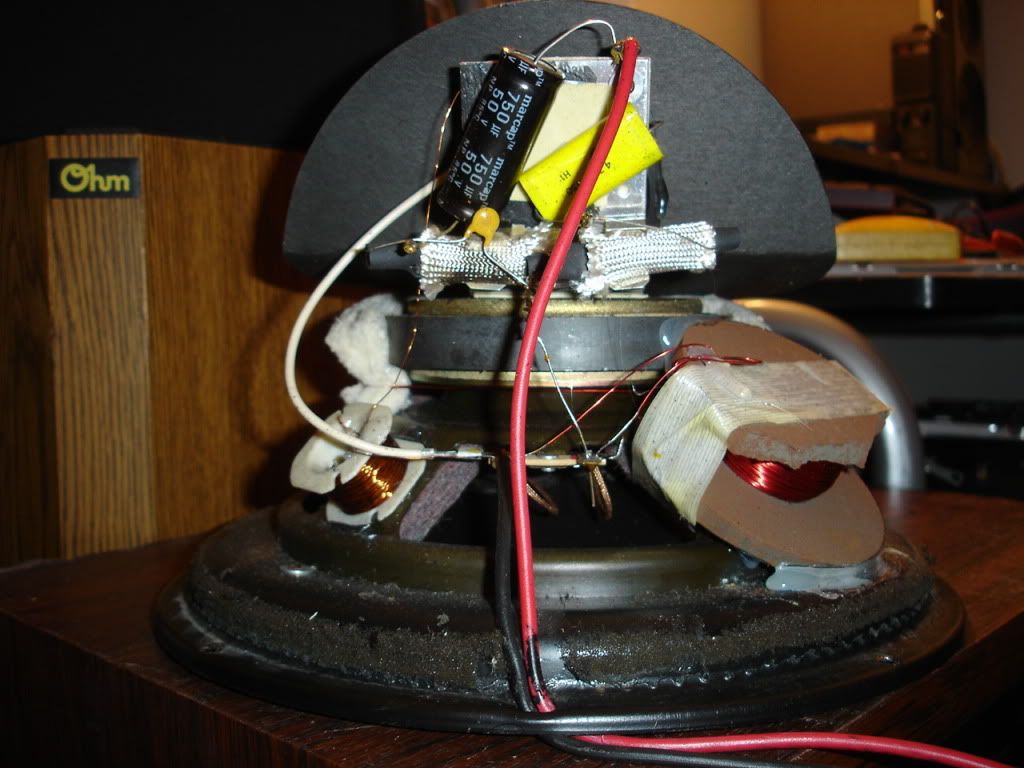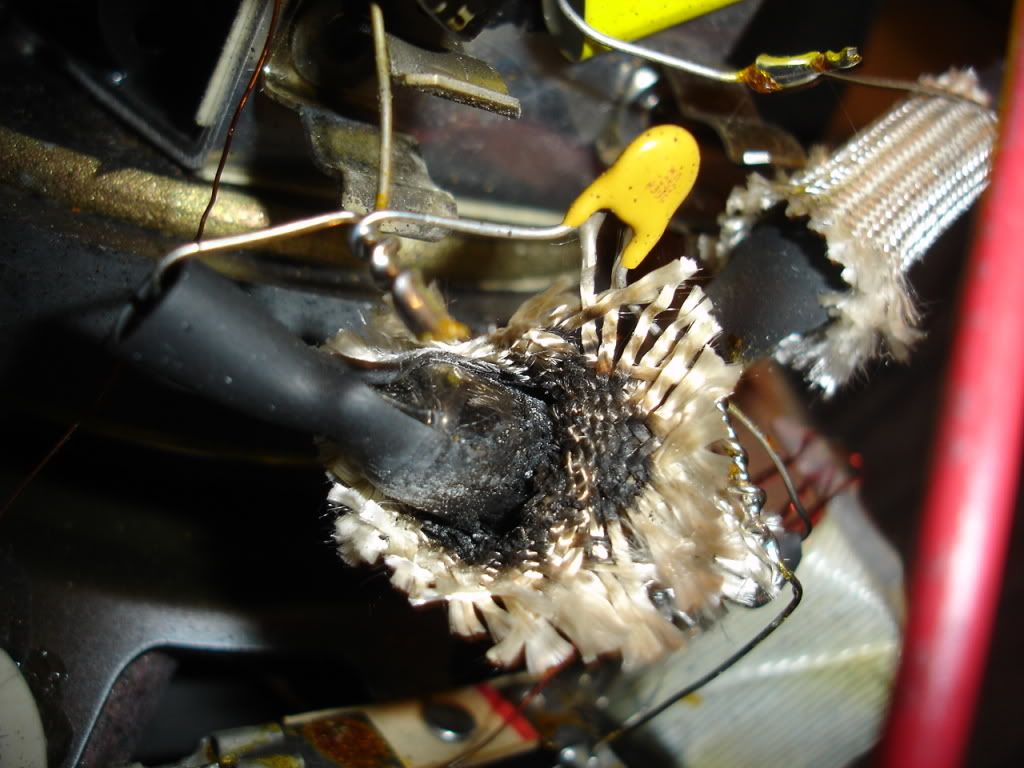I will admit that the first time I saw the innards of a Walsh inverted cone loudspeaker (a photo of a Walsh 2 if memory serves) I was taken aback. But, after considering the matter, I would point out that internal esthetics are really unimportant and "name brand" electronic componentry is rather overrated. The thind about the Ohms is they do what is important well: they sound fantastic. And they are brilliantly engineered to be very robust in the field under extreme playing conditions (I know - I've played the heck out of them) and produce remarkable prodigous sound from an economy of materials.
About 15 years ago, I recall reading a review of the Ohm Pro-200 Sound Cyclinders in Stereo Review (of all places). I owned a pair and liked them to an extreme - they were my prime listening speaker for several years. The reviewers marveled at the excellent soundstaging and omni presentation. They were also quite amazed that these diminuitive floorstanders (4 foot high cyclinders with about 10" diameter footprint) produced measureable and almost serviceable output to 20 Hz! I would later find out, to my complete shagrin, that the Pro-200s utilize 6" woofers!
The inverted woofer in an Ohm Walsh loudspeaker may look pedestrian and ordinary; but, it is anything but. These woofers have been specifically engineered and spec'd out to work magic with the box. They have bass output, very high frequency extension, power ratings and midrange performance that cannot be achieved simultaneously with an ordinary woofer. I examined the insides of my Walsh 5 cabinets and the internal construction is quite remarkable. And the port is a very long, right angle tube of at least 5 inch diameter (!). The thing is, knowing the internal volume of the box and the port dimensions, I determined that there is no 12 inch woofer available retail that comes anywhere near providing the performance of the Walsh 5's, particularly bass extension anechoic flat to 25 Hz and in-room flat to 20 Hz.
Presently, I am listening to the Walsh 5000 drivers which I upgraded to from the Walsh 5 Series 3 headunits, which in turn were the upgrade from the classic Walsh 5s. I'll hold off on a detailed review until I've logged some serious listening hours. But let me say that these Walsh 5000s are incredible, light years superior to the Walsh 5's and audibly superior to the most excellent Walsh 5 Series 3. Truth be told: I decided to upgrade after one of the Walsh 5 Series 3 drivers developed an annoying resonance heard only on certain piano, vocal and horn recordings. Mind you I have logged several thousands hours including some heavy duty classical recordings by the likes of Mahler, Bruckner and Nielsen at concert hall sound levels. I was a little reluctant to spend $3000 to upgrade to the 5000s, certain that John Strohbeen could not possibly improve that much over the Walsh 5 Series 3. Man was I wrong! This looks to be the best $3000 audio investment I have made to date. If my preliminary impressions hold up under prolonged listening, I think John has built a loudspeaker for the ages. He has completely reengineered the inverted main drivers, using neodymium magnets, new voice coils and cloth surrounds (which should outlast me at age 53 for sure). I hope to comment in more detail later.
Now, I'm going back to listening the Guillot's organ playing on the Ohm Walsh 5000s!



